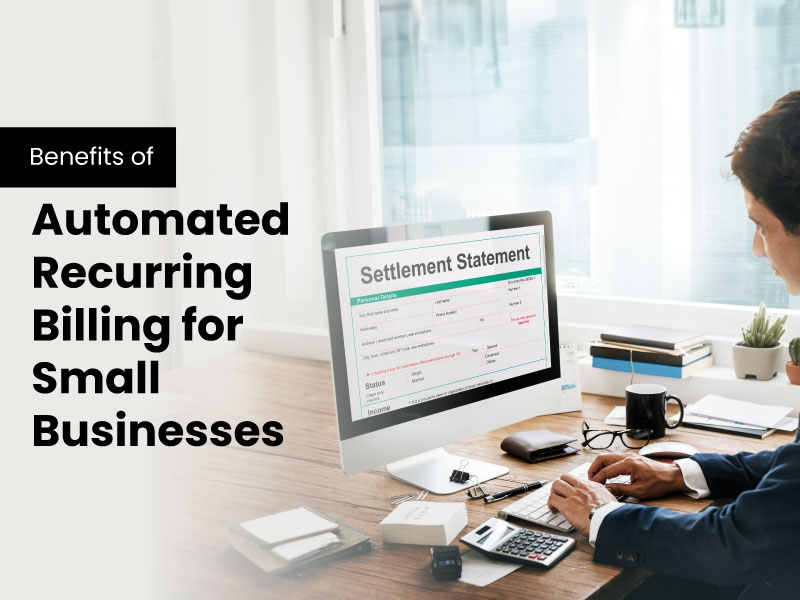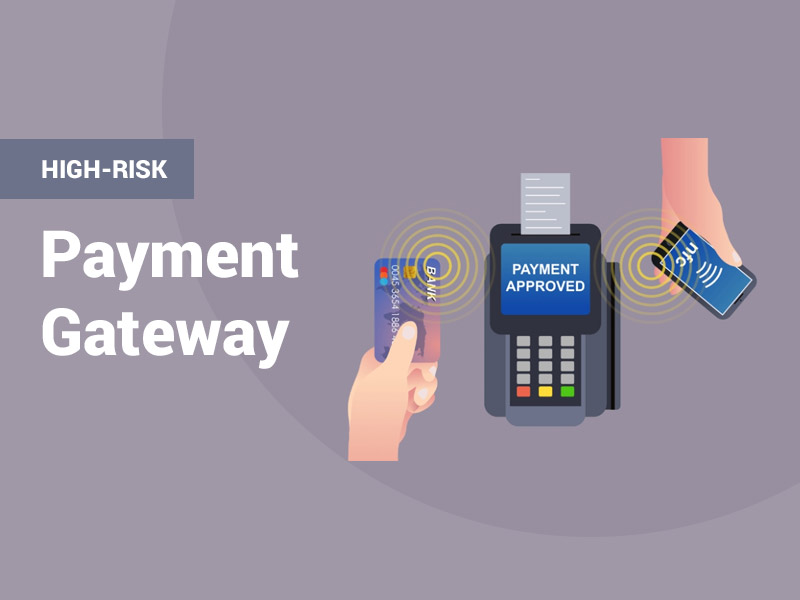Nowadays in modern business, efficiency remains a major factor. In order to remain competitive and successful, especially small businesses should simplify their activities. Automation provides a major advantage to small businesses, especially in billing. The use of automated recurring billing systems has been a game changer in the way businesses process financial transactions.
Being a small business owner or a manager, you know how important is efficient financial management to your business’s success. Manual handling of invoices, payments, and revenue tracking can not only consume precious time but is also susceptible to errors. This is where automated recurring billing software steps in. Selecting the best recurring billing software for your business is significant. Having such software streamlines financial operations improves accuracy and efficiency, and helps your firm grow.
If you are looking for the best options for recurring billing software, you can check out this blog on the some best payment recurring systems. This blog provides an in-depth look at the top solutions available for managing subscription billing efficiently.
Let’s first understand what is automated recurring billing.
What is Automated Recurring Billing?
This is also known as subscription billing or automatic billing which can be defined as a billing system to streamline the handling of financial transactions in a business.
In essence, the automated recurring billing system enables companies to invoice their clients without manual involvement at fixed intervals for the offered products or services. This modern solution eliminates the need for the traditional and often cumbersome methods of sending manual invoices and tirelessly chasing payments. Instead, it entrusts these repetitive and time-consuming tasks to a specialized billing software or platform, which in turn unlocks a plethora of advantages for small businesses.
Transformational automated recurring billing is key to businesses seeking to streamline their finances. it’s not only a technological marvel, but also a strategic asset that allows for efficient business operations without having to use outdated methods such as billing and collecting payments manually. Through this innovative system, businesses can create a predictable, efficient, and error-free revenue stream, allowing them to focus on what truly matters: growth and customer satisfaction.
Automated recurring billing is a shift from the traditional approach in favour of a more advanced technique that promotes client convenience and automation. As per the reports of Research & Markets, subscription payments, a sort of recurring billing, are predicted to increase from USD 4,054 million in 2020 to USD 7,813 million by 2025. This growth reflects the increasing need for streamlined and quick payment solutions.
Let’s discuss the benefits of automated recurring billing.
The Benefits of Automated Recurring Billing
Let’s delve deeper into each of these benefits:
1. Saves Time and Resources
Automating your billing processes can significantly save your small business time and resources. Here’s how:
Streamlined Administrative Tasks
Automated recurring billing eliminates the need for issuing invoice statements, sending payment reminders, and tracking down late payments. This leaves your team free to concentrate on essential business activities such as customer acquisition and product development.
Reduced Human Error
Manual billing processes are prone to human errors. Typos, miscalculations, and other mistakes can lead to payment discrepancies and customer dissatisfaction. Automated billing minimizes these errors, ensuring accurate and consistent billing.
2. Consistent Cash Flow
Maintaining a consistent cash flow is crucial for the financial health of small businesses. Automated recurring billing helps in this regard by:
Predictable Revenue
You can predict and manage your cash flow more effectively with automated billing. You know exactly when payments will be received, allowing for better financial planning. This predictability provides a sense of stability and control over your finances.
Stable Income Stream
The reliability of recurring payments provides a steady income stream, even during times when business may be slower. This stability is particularly important for small businesses with limited resources, helping to cover operational costs and invest in growth.
3. Reduced Human Errors
Human errors in billing processes can lead to customer dissatisfaction, delayed payments, and even financial disputes. Automating your billing system reduces these risks:
Accurate Billing
Automated systems eliminate the risk of billing errors. Invoices are generated accurately, payment amounts are consistent, and customers can trust the integrity of your billing processes.
Minimized Data Entry Errors
Manually entering data can result in costly errors. Automated billing systems minimize data entry errors, ensuring that customer information and transaction details are correct.
4. Improved Customer Experience
A positive customer experience is paramount for retaining customers and attracting new ones. Automated recurring billing contributes to this by:
Convenience
Customers appreciate the convenience of automated payments. They can set up their preferred payment methods and billing schedules, making the payment process effortless and hassle-free.
Transparent and Timely Transactions
Automated billing ensures that customers are charged accurately and on time without manual intervention. This transparency builds trust and contributes to elevating the overall customer experience.
5. Customization and Flexibility
Every small business has its unique billing requirements. Automated recurring billing systems offer a high degree of customization and flexibility, allowing you to cater to various customer needs:
Tailored Billing Plans
You can set up different billing cycles, discounts, and trial periods to accommodate diverse customer preferences. Whether you offer monthly, quarterly, or annual subscriptions, the system adapts to your needs.
Changing Business Models
Similarly, as your business grows, your billing needs will also change. These automated billing systems can be adjusted according to the changes of the business model so that you stay responsive towards customers’ needs.
6. Enhanced Security
The security of financial data is a top priority for businesses and their customers. Automated billing systems provide robust security measures:
Data Protection
These systems frequently come along with state-of-the-art security protocols to protect against leakage of confidential customer information as well as financial information. Adherence to industry’s standards and regulations mitigates the possibility of data breach and fraud.
7. Reduction in Overdue Payments
Late or missed payments can disrupt your cash flow and create financial uncertainty. Automated recurring billing systems address this challenge:
Payment Reminders
Automated systems send payment reminders to customers, reducing the likelihood of overdue payments. These reminders can be configured to be sent at specified intervals, ensuring customers are aware of upcoming payments.
Failed Payment Handling
The system also handles failed payments efficiently. It can automatically retry failed transactions, minimizing the number of outstanding payments and accounts receivable.
8. Scalability
Small businesses often aim to grow over time, and automated recurring billing systems can grow with them:
Effortless Expansion
As your customer base and transaction volume expand, the automated billing system effortlessly scales to accommodate this growth. There’s no need to overhaul your billing processes, ensuring that efficiency is maintained as your business expands.
Cost-Efficient Growth
Scaling with an automated system is a cost-efficient way to manage a growing customer base. It eliminates the need for significant manual labor, helping you control operational costs.
9. Access to Valuable Data
Data is a valuable asset in today’s business world, and automated recurring billing systems offer insights into your business performance:
In-Depth Reports
These systems provide detailed reports and analytics that help you make informed decisions. You can gain a better understanding of customer behavior, subscription trends, and financial performance.
Pricing Optimization
With access to data on customer preferences and payment habits, you can optimize pricing strategies to maximize revenue while remaining competitive in the market.
10. Reduced Operating Costs
Cost efficiency is a crucial consideration for small businesses. Automated recurring billing reduces operating costs in various ways:
Administrative Savings
By automating billing processes, you reduce the need for manual administrative work, saving on labor costs. Your team can focus on revenue-generating activities.
Material Cost Reduction
Traditional billing methods often involve paper, postage, and other materials that can be costly. Automated billing eliminates the need for these materials, providing additional cost savings.
Key Features of Automated Recurring Billing Systems
Automated recurring billing systems are packed with a suite of features aimed at streamlining and enhancing your billing procedures. These features are pivotal in optimizing your small business’s financial management. Here’s an in-depth look at the key features offered by automated recurring billing systems, presented in bullet points:
1. Customer Management
- Centralized customer database for efficient customer information storage.
- Easily access and update customer billing history and contact details.
- Simplified customer relationship management for personalized service.
2. Subscription Management
- Create, modify, and cancel subscriptions with ease directly within the billing platform.
- Seamless handling of customer subscription preferences.
- Minimize administrative efforts required for subscription management.
3. Invoice Generation
- Automatic generation and distribution of invoices to customers at predefined billing intervals.
- Elimination of manual invoicing, reducing the risk of errors.
- Improved customer experience with timely and accurate invoices.
4. Payment Processing
- Secure and convenient payment processing through multiple payment gateways.
- Offer various payment methods to cater to the diverse preferences of your customers.
- Boost customer satisfaction by providing flexible and hassle-free payment options.
5. Dunning Management
- Efficient handling of failed payments with dunning management features.
- Automated payment retry mechanisms to recover outstanding payments.
- Automated customer notifications for payment issues, reducing customer disputes.
6. Reporting and Analytics
- Gain access to comprehensive reports and analytics for a deeper insight into your financial performance.
- Monitor revenue trends, customer behavior, and billing data.
- Make informed business decisions based on data-driven insights.
7. Integration Capabilities
- Ensure seamless integration with essential business software.
- Integrate with accounting tools for real-time financial data synchronization.
- Collaborate with customer relationship management (CRM) systems to enhance customer interactions and service quality.
- Promote a more cohesive operation by connecting your billing system with other critical software components.
How to Implement Automated Recurring Billing
Implementing automated recurring billing in your small business is a straightforward process. Here are the steps to get started, presented in bullet points:
Step 1. Choose a Billing System
- Research and select a billing system that best aligns with your business’s specific needs and objectives.
- Consider factors such as pricing, features, scalability, and the availability of comprehensive customer support. The right billing system should be a long-term solution that grows with your business.
- Ensure the chosen billing system is compatible with your industry and business model, whether it’s subscription-based, usage-based, or one-time payments.
Step 2. Set up Your Accounts
- Create dedicated accounts within the selected billing system to organize and manage both your business and individual customer accounts effectively.
- Input essential customer information, including contact details and billing preferences, into the system. Accurate data ensures smooth billing and communication.
- Define pricing structures in line with your product or service offerings. This should include variations such as tiered pricing for different customer segments or customized pricing for unique services.
Step 3. Configure Billing Plans
- Define your billing plans within the billing system to match your business strategy. Your billing plans should be adaptable to the needs of your customers and aligned with your pricing model.
- Specify pricing clearly for each plan, detailing any tiers, add-ons, or options. Ensure your pricing is competitive and offers value to your customers.
- Determine billing intervals (monthly, quarterly, annually, etc.) that suit your customers’ preferences. You may also consider offering flexible billing intervals.
Step 4. Integrate Payment Gateways
- Easily link your billing system into different payment gateways to create smooth transactions.
- Confirm that clients can transact safely at their convenience, via options such as credit cards, digital wallets, and transfers. Several types of payment will boost client comfort levels and improve their satisfaction.
- Prioritize security in payment processing by complying with industry standards, such as PCI DSS (Payment Card Industry Data Security Standard), to protect sensitive customer data during transactions.
Step 5. Test the System
- Conduct rigorous testing of the automated billing system before going live.
- Verify the system’s functionality, including payment processing, invoicing, and notification features.
- Identify and rectify any potential issues or errors.
Step 6. Launch and Monitor
- Once all tests are successful and everything is in order, launch the automated billing system for regular use.
- Continuously monitor its performance, with a focus on payment processing efficiency and customer feedback.
- Be prepared to make necessary adjustments to enhance system performance and user experience.
Step 7. Support and Maintenance
- Implement regular updates and maintenance procedures to ensure the billing system remains efficient and secure.
- Promptly address any customer inquiries or issues to maintain a positive and productive business-customer relationship.
- Consider providing ongoing training and support for your staff to maximize the benefits of the automated billing system.
Conclusion
Automated recurring billing is a cornerstone of modern financial management for small businesses. The numerous benefits offered by automated billing, from time savings to enhanced security, contribute to improved efficiency, financial stability, and customer satisfaction. By implementing the right automated recurring billing system, small businesses can navigate the complexities of financial management with ease and thrive in today’s dynamic business environment.
In a world where every advantage matters, embracing automated recurring billing is a wise move for small businesses looking to streamline their operations and secure a prosperous financial future. Your journey toward a more efficient and prosperous small business begins with the decision to implement automated recurring billing.







